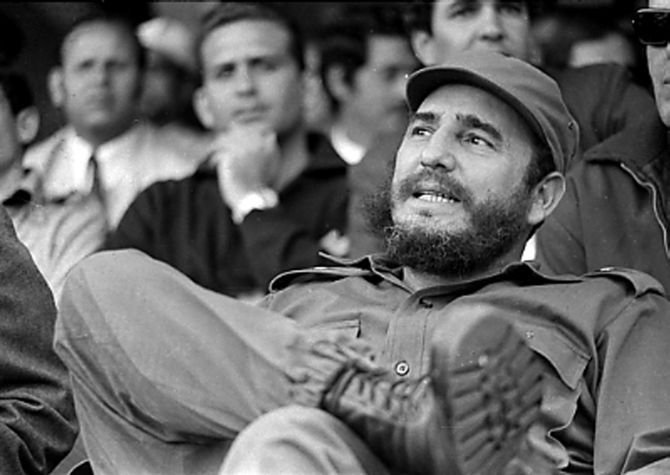 Fidel Castro, who symbolised revolution for close to 60 years, passed into the ages on Friday, November 25.
Fidel Castro, who symbolised revolution for close to 60 years, passed into the ages on Friday, November 25.
Glimpses from the Commandante's colourful life:
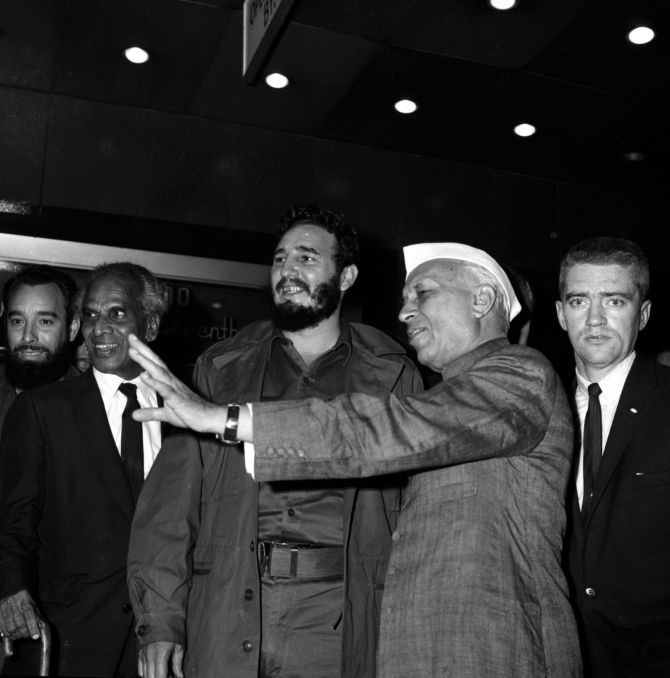
Fidel with Jawaharlal Nehru in New York. 1960.
Photograph: Prensa Latina/Reuters

Fidel during a visit to Oran, Algeria, in 1972.
Photograph: Prensa Latina/Reuters
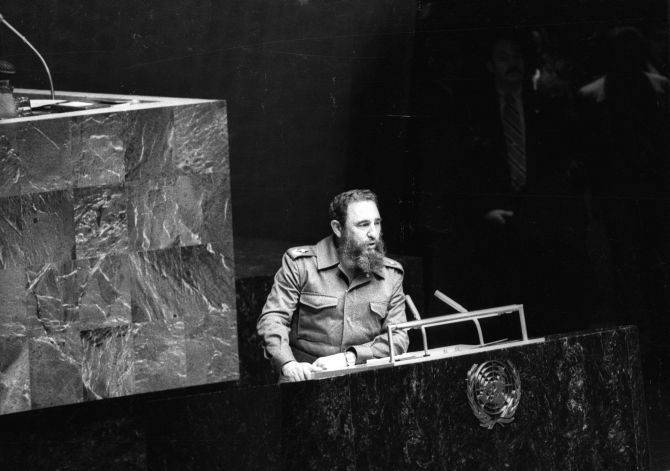
His appearances at the United Nations were the highlight of the General Assembly season.
Here he is, addressing the UN as president of the Non-Aligned Movement in 1979.
Photograph: Prensa Latina/Reuters
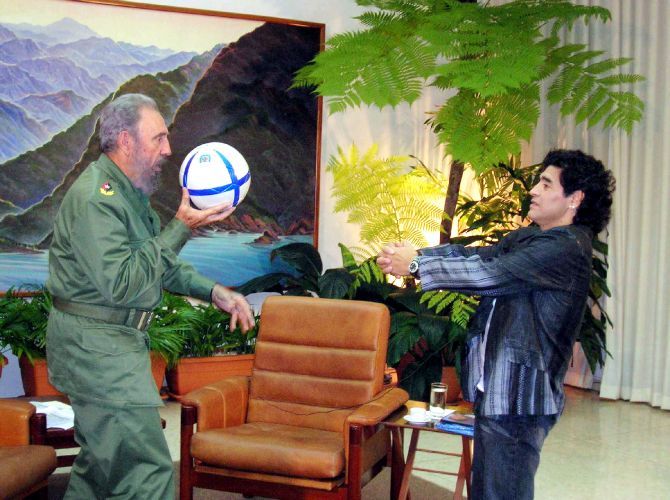
Who knew Fidel could play football?
Soccer legend Diego Maradona and Fidel play around in La Havana in 2005.
Photograph: Canal 13/Reuters
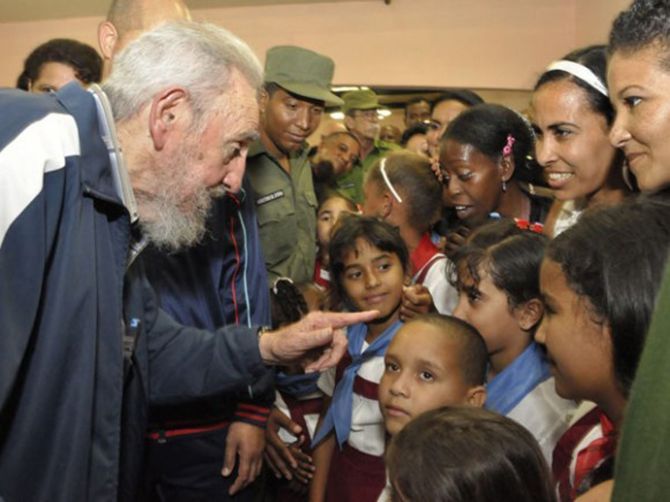
Castro with schoolchildren at the inauguration of a school in Havana in 2013.
There are no streets named after him in Cuba, no statues, but children re-enact his march towards Havana in 1959 every year.
Photograph: Cubadebate/Reuters

Five years before a botched up stomach surgery forced him out of office, Fidel traveled to South Africa and met another legendary revolutionary: With Nelson Mandela in Houghton, Johannesburg, in 2001.
Photograph: Chris Kotze/Reuters
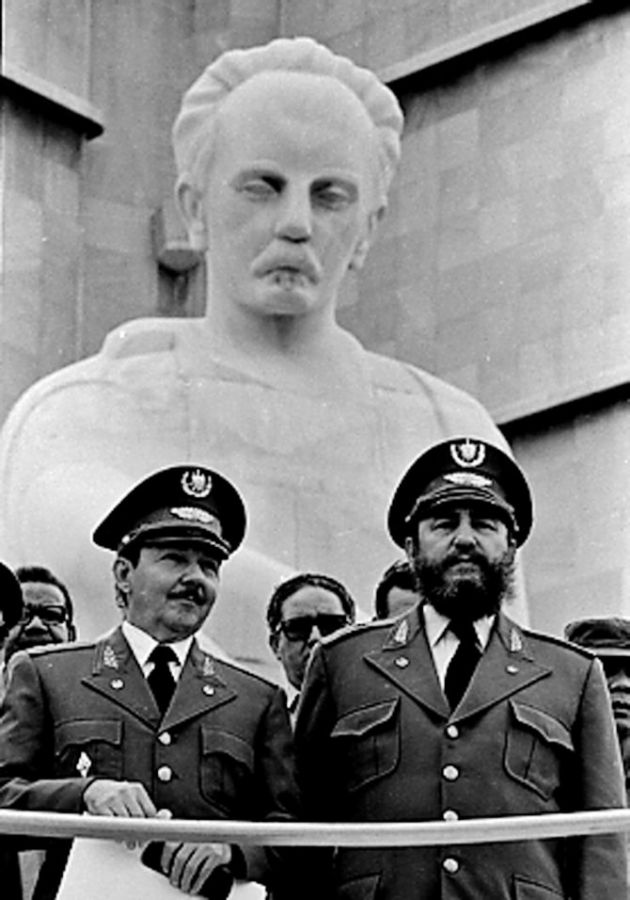
Fidel and younger brother Raul, left, attend the 20th anniversary of the Triumph of the Revolution at Revolution Square in Havana in February 1979.
Raul Castro has led Cuba for the last eight years and dismantled some of his brother's old style Communist policies.
Photograph: Prensa Latina/Reuters
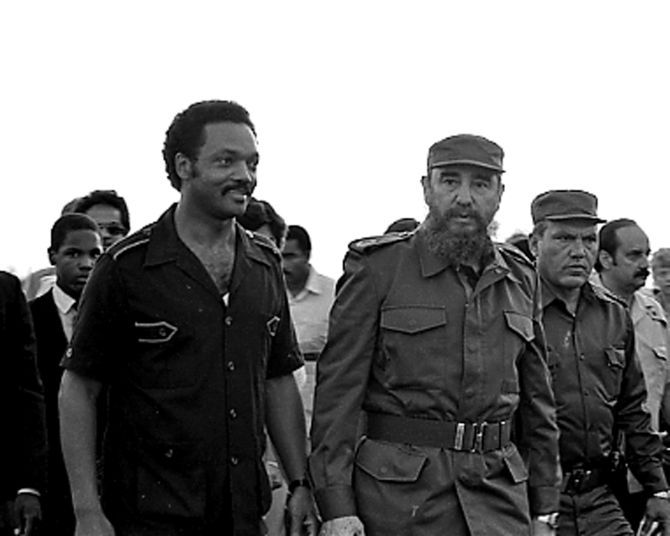
Castro with Jesse Jackson, left, at Havana's Jose Marti airport in June 1984.
Reverend Jackson was a rare American public figure to travel to the island.
Americans were forbidden to travel to Cuba for over half a century because of the US economic embargo against its tiny Communist neighbour.
After President Barack Obama ended the trade embargo and normalised relations, Americans are now free to fly to Cuba, which is just 330 miles by air from Miami.
Photograph: Prensa Latina/Reuters

Right to left: Fidel, with his admirers, Bolivian President Evo Morales and Venezuelan President Nicolas Maduro in a van in Havana, August 13, 2015, his 89th birthday.
Throughout his tenure at the helm of the Cuban nation, El Commandate tried to kindle the flame of Revolution in Latin America.
Photograph: Agencia Boliviana de Informacion/Reuters

Pope Francis, the Argentine born pontiff, with Fidel in Havana in 2015.
The Pope is said to have played a key role in mediating between Cuba and its giant neighbour, eventually ending the hostilities between the two nations.
Photograph: Alex Castro/AIN/Reuters
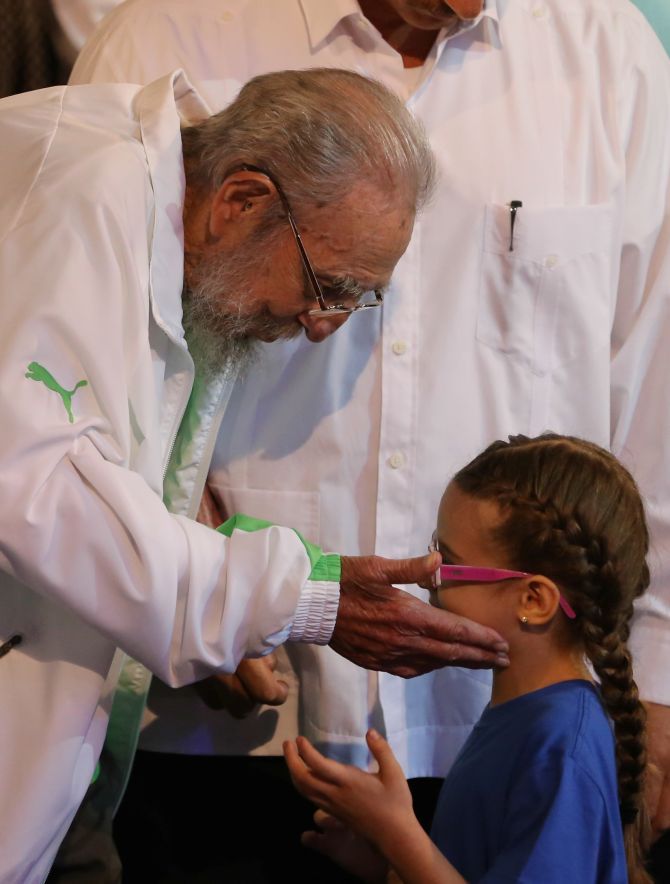
Fidel at a cultural gala to celebrate his 90th birthday in Havana, August 13, 2016.
Photograph: Miraflores Palace/Reuters
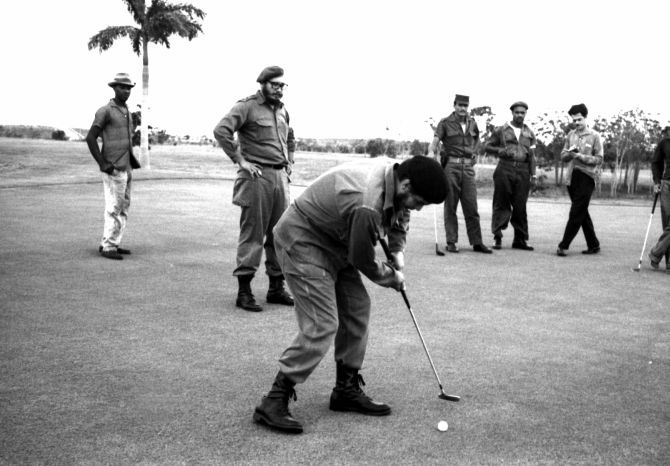
Fidel in glasses with his legendary comrade Ernesto Guevara as Che plays golf at Colina Villareal in Havana.
Che was murdered in Bolivia in 1967 while trying to spread revolution.
Photograph: Prensa Latina/Reuters
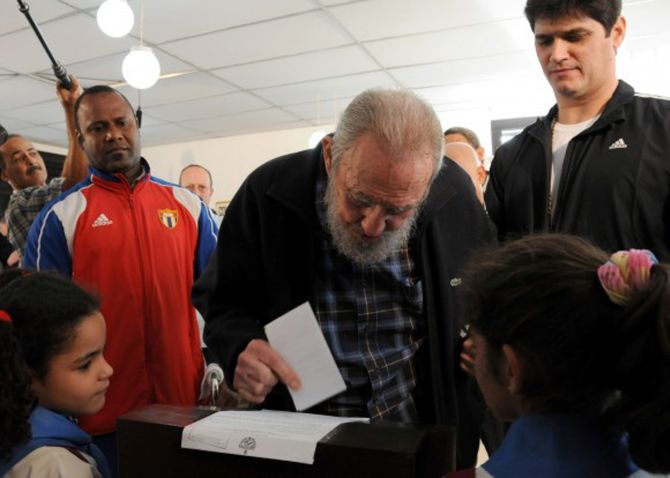
Fidel casts his ballot at a polling station in Havana on February 3, 2013.
This was his first extended public appearance since 2010.
He had voted from his home in three previous elections since taking ill in 2006 and ceding power to his brother Raul two years later.
Photograph: Cubadebate/Reuters
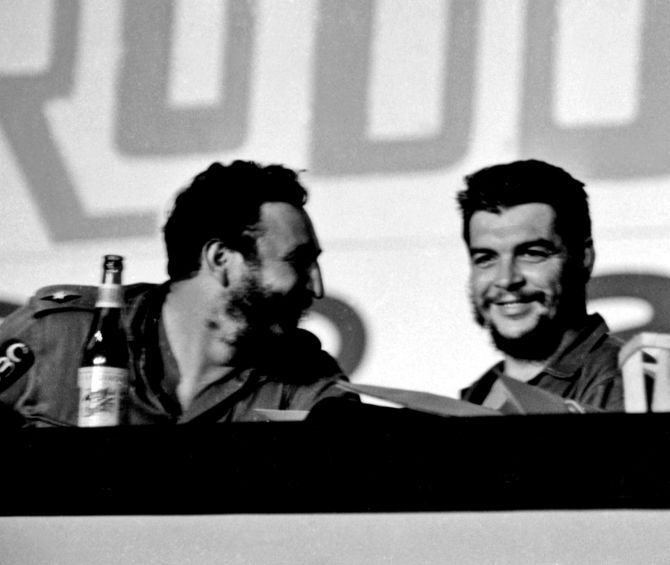
Fidel and Che -- who was Argentinian and a doctor -- at a meeting.
Photograph: Prensa Latina/Reuters
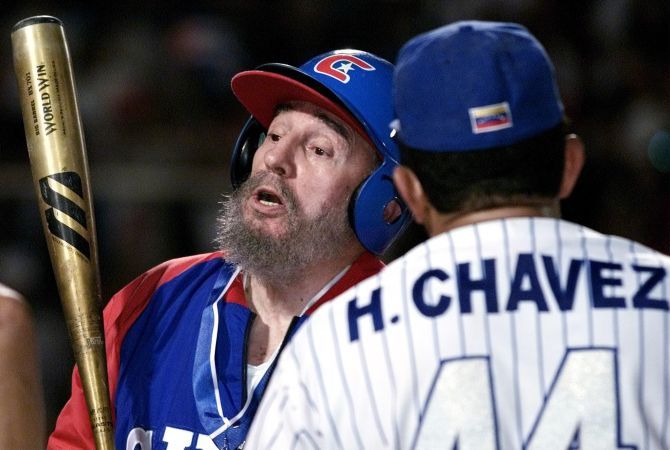
Fidel and then Venezuelan leader Hugo Chavez -- one of his biggest admirers -- during a baseball game between their two countries at Barquisimeto's baseball stadium on October 29, 2000.
Venuzuela's financial largesse from its oil revenues kept Cuba afloat after Havana's old patron the Soviet Union collapsed in 1991.
Photograph: Reuters
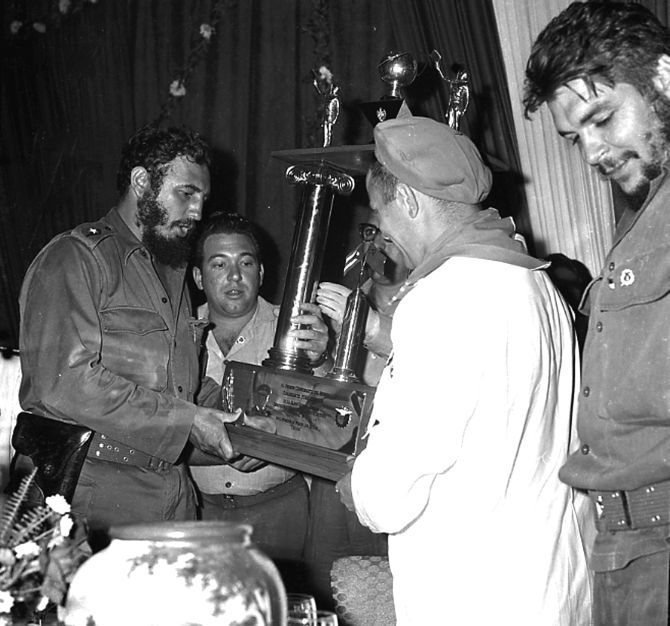
Fidel and Che with Yuri Gagarin, the first man in space, centre. Havana, May 26, 1961.
Photograph: Prensa Latina/Reuters
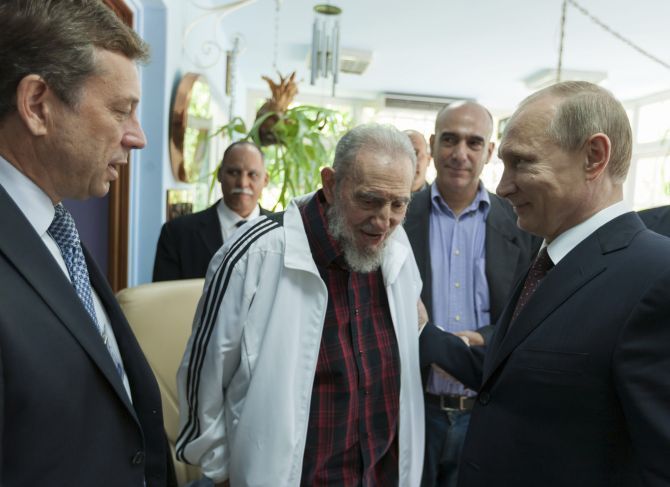
Russian President Vladimir Putin with Fidel in Havana.
Despite his mercurial nature, Soviet leaders from Khrushchev to Brezhnev to Gorbachev kept Fidel in good humour, recognising the propaganda value Communist Cuba presented the USSR during the Cold War.
Photograph: Cubadebate/Reuters
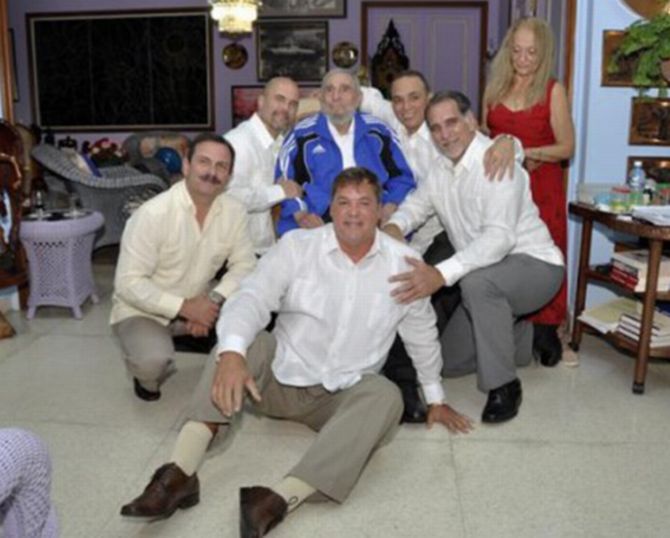
Fidel and his wife Dalia Soto Del Valle (in the red dress) pose for a photograph with the 'Cuban Five': Ramon Labanino, centre, front; Fernando Gonzalez, left; Gerardo Hernandez, second left; Antonio Guerrero, third right; and Rene Gonzalez, second right.
Fidel met with all five Cuban spies who returned home as heroes after serving long prison terms in the United States.
Photograph: Cubadebate/Reuters
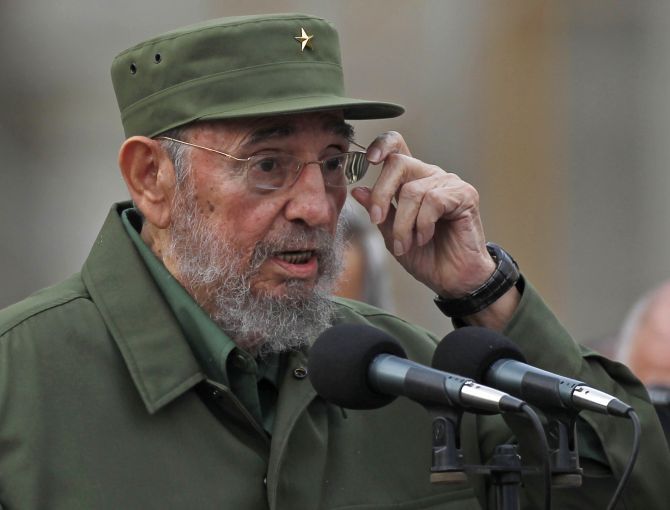
Three hour speeches were routine in his heyday.
Fidel could go on and on, rhapsodising about the beauty of revolution, even though it was apparent to his people that the Cuban revolution had failed to deliver what it had promised.
Even after he was sick and infirm, Fidel still turned up on occasions like the 50th anniversary of the creation of the Committees for the Defence of the Revolution -- Havana, September 28, 2010 -- to deliver his message that the revolution must not die even if one day he did.
The CDRs are assigned to every block of houses in Cuba to provide medical assistance if needed.
The CDRs are also an Orwellian Big Brother apparatus to spy on the Cuban people and bring dissenters to the Castro regime's harsh notice.
Photograph: Desmond Boylan/Reuters

French President Francois Hollande with Fidel in Havana, May 11, 2015.
Photograph: Alex Castro/Cubadebate/Reuters
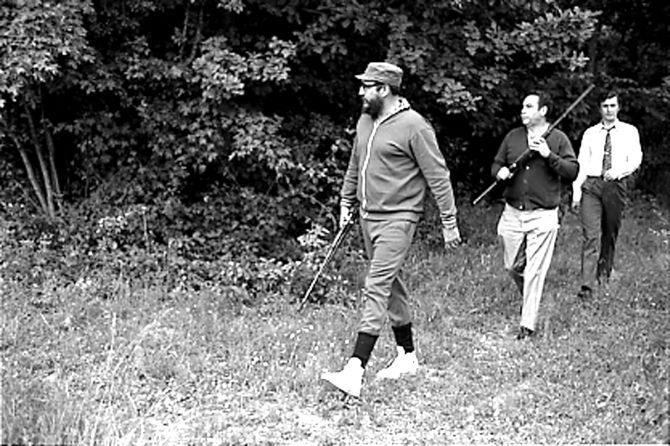
Fidel during a hunting trip in Romania in May 1972.
During the Cold War, he was feted like a hero in the USSR dominated Communist bloc, his lustre as the last revolutionary survived the demise of the Soviet Union.
Photograph: Prensa Latina/Reuters
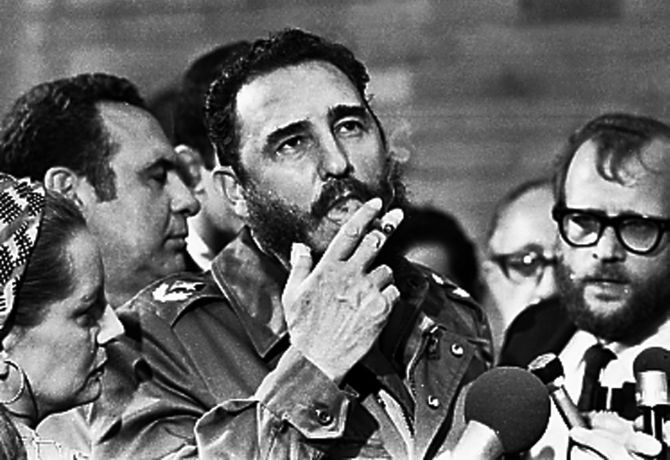
Fidel was often seen smoking what else a Cuban cigar.
Here he is, lecturing the press in Havana during then US Senator Charles McGovern's visit in May 1975.
Photograph: Prensa Latina/Reuters
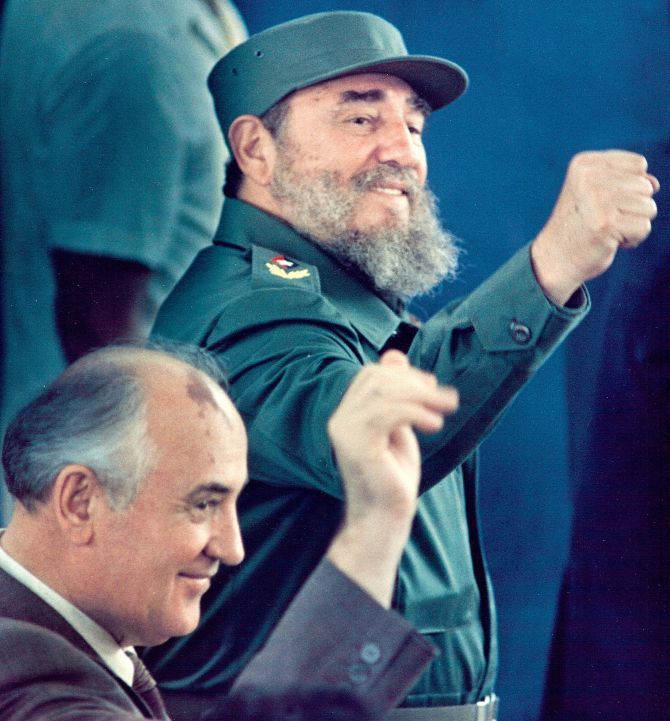
Mikhail Gorbachev with Fidel in Havana, April 3, 1989.
Fidel was sceptical and suspicious of the Soviet leader's policies of perestroika and glasnost, realising correctly that the totalitarian edifice of the USSR would neither survive reformation nor openness.
Photograph: Gary Hershorn/Reuters
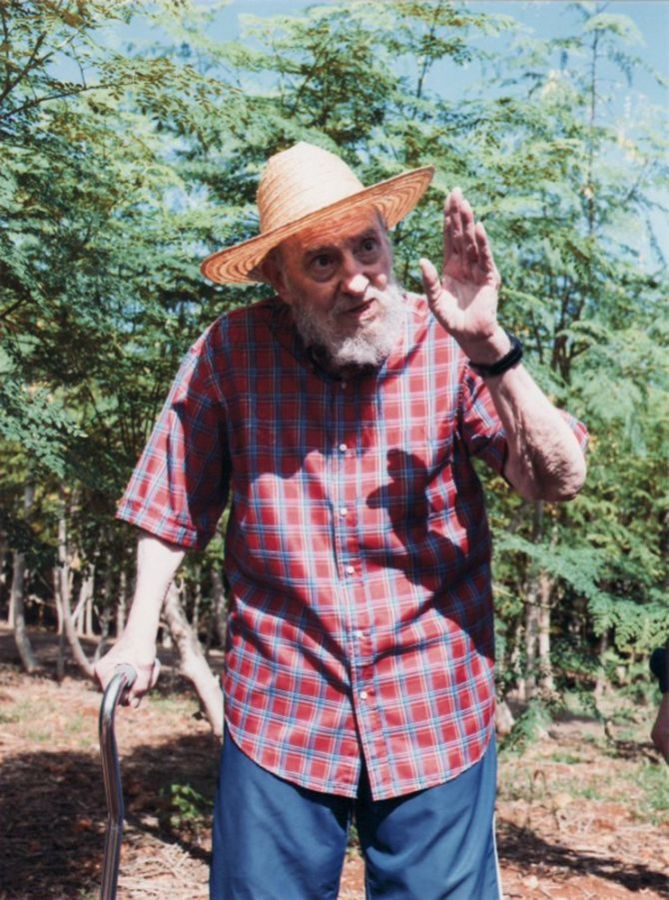
Fidel in Havana in 2012, dismissing an article published in Cuba's tightly controlled State-run press claiming that he was dead or near death.
He accused Cuba's enemies of spreading 'stupidities' about him, particularly a report in a Spanish newspaper that said he had suffered a massive stroke and was in a vegetative state.
Phtograph: Alex Castro/Cubadebate/Reuters
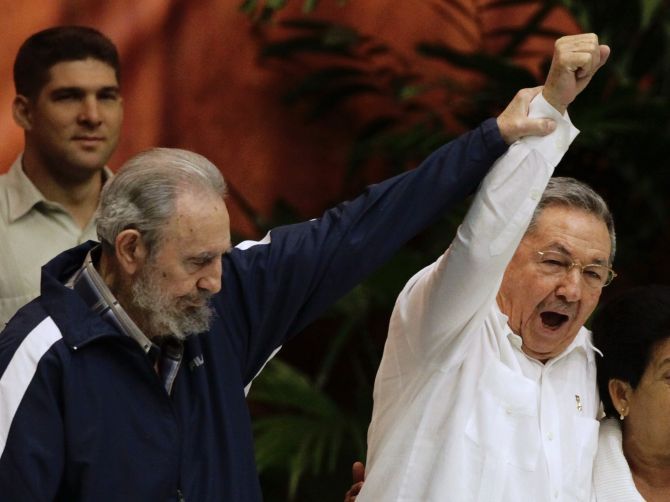
Fidel and Raul Castro at the closing ceremony of the sixth Cuban Communist Party Congress in Havana in 2011.
Photograph: Desmond Boylan/Reuters
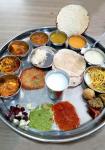
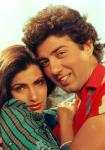

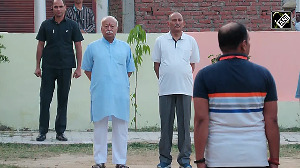

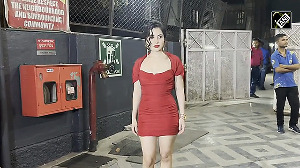
 © 2025
© 2025